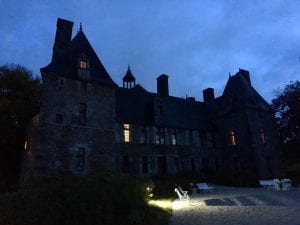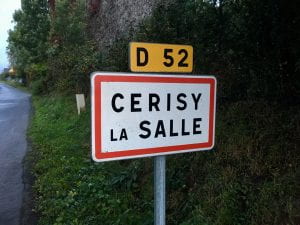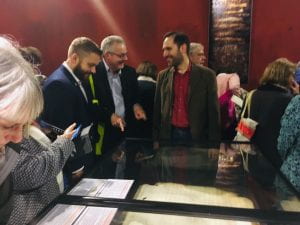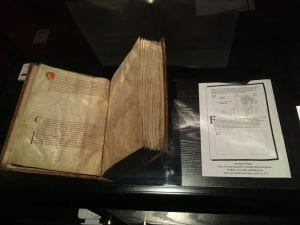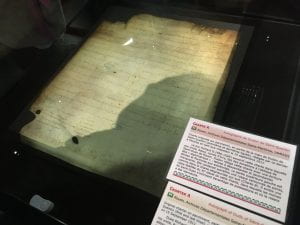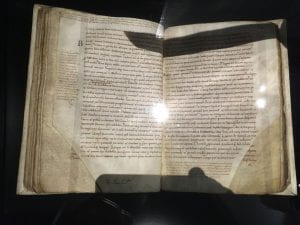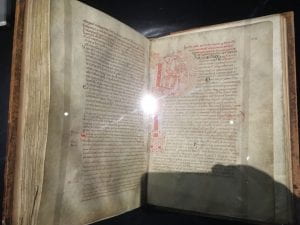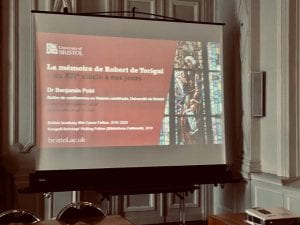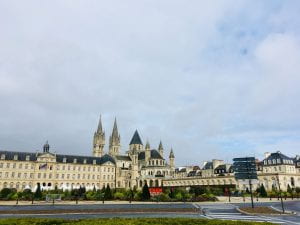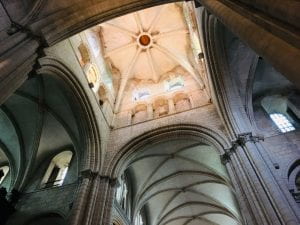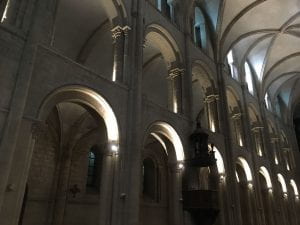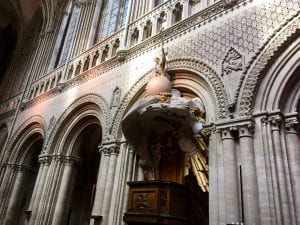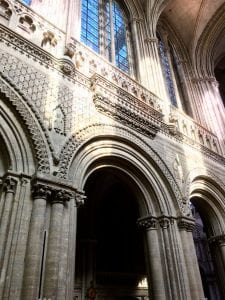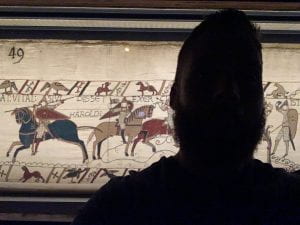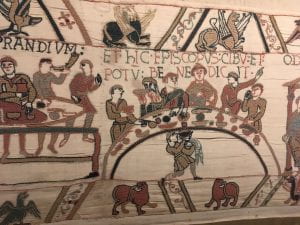Last week, I (Benjamin Pohl, PI) had the great pleasure of attending and speaking at a conference on the fashioning of history in medieval Normandy and beyond (‘Maîtriser le temps et façonner l’histoire: Les historiens normands aux époques médiévale et moderne’), which was held at the castle of Cerisy-la-Salle (dép. Manche, cant. Coutances) – a uniquely suitable location for contemplating the role of historical writing and historical consciousness in medieval and modern communities.
The conference brought together a range of experts from France, England, Italy and Germany, and it also included a private visit to the current manuscript exhibition ‘Façonner l’histoire de la Normandie: Manuscrits et chartes médiévales’ at the Scriptorial in Avranches. This exhibition unites – for the first time – a stunning collection of autographs and working copies from some of the most prominent writers of history in the 11th- and 12th-century Latin West, including Dudo of Saint-Quentin, William of Jumièges, Orderic Vitalis, Robert of Torigni, Ademar of Chabannes, Hugh of Flavigny and Rodulfus Glaber. Several of these writers and their manuscripts are of crucial importance to this project, first of all, of course, the two ‘abbot-historians’ Hugh of Flavigny and Robert of Torigni.
It was Robert of Torigni who formed the subject of my talk, which took place not at Cerisy, but in the beautiful salle du conseil at the Hotel de Ville d’Avranches. Addressing the mayor of Avranches and members of the local public alongside my academic colleagues, I talked about how the memory of Robert and his historical works has been preserved from the twelfth century to the present day, including sources from the two medieval Norman monasteries of Le Bec-Hellouin and Mont-Saint-Michel, but also selected materials from the 17th, 18th and 19th centuries, as well as 20th/21st-century re-imaginations of Robert in the form of stained-glass windows, historical novels, newspaper articles and graphic novels (bandes dessinées). A written and illustrated version of my talk will be published in due course in the conference proceedings co-edited by the two organisers, Stéphane Lecouteux and Fabien Paquet.
On the way to and from the conference, I took the time to stop by some historical sites including the two great abbeys of Saint-Étienne and La Trinité in Caen (founded by William the Conqueror and his wife and duchess/queen Matilda of Flanders, respectively), the Cathedral of Bayeux and, not least, the ever-gorgeous Bayeux Tapestry.


